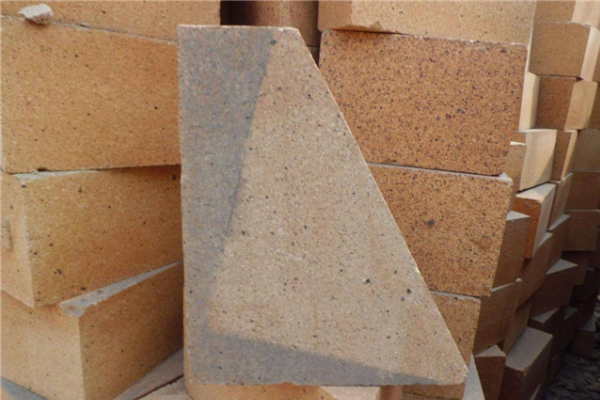طوب النار, المعروف أيضًا باسم الطوب الحراري, هي عنصر حيوي في مختلف التطبيقات الصناعية مثل الأفران, أفران, والمواقد. تم تصميم هذه الطوب المتخصصة لتحمل درجات حرارة عالية وتوفير عزل حراري ممتاز. في عملية تصنيع طوب النار, يلعب مراقبة الجودة دورًا محوريًا في ضمان إنتاج منتجات موثوقة ودائمة.


أهمية مراقبة الجودة في صناعة الطوب الحراري
يعد الحفاظ على تدابير مراقبة الجودة الصارمة أثناء إنتاج طوب الحريق أمرًا بالغ الأهمية لعدة أسباب:
ضمان الامتثال للسلامة: تعرض طوب النار للحرارة الشديدة, ويمكن أن يؤدي فشلهم إلى حوادث خطيرة أو تلف الممتلكات. من خلال مراقبة الجودة, يمكن للمصنعين التحقق من أن الطوب تلبي لوائح السلامة وأن يكون لها خصائص مقاومة للحرائق اللازمة.
تحسين الأداء: تحتاج طوب النار إلى توفير عزل حراري ممتاز ومقاومة للصدمة الحرارية. مراقبة الجودة يضمن أن الطوب مقاوم للحريق لديك التكوين الصحيح, كثافة, والمسامية لتقديم الأداء الأمثل في بيئات درجات الحرارة العالية.
منع الفشل المكلف: طوب النار ذوي الجودة الضعيفة عرضة للتصدع, spalling, أو تفكك عند تعرضه لدرجات حرارة قصوى. من خلال تنفيذ تدابير مراقبة الجودة, يمكن للمصنعين تحديد الطوب المعيب والقضاء عليه, تقليل مخاطر الفشل والبدائل المكلفة.
تعزيز المتانة: من المتوقع أن تتمتع طوب الحريق بعمر خدمة طويل وتصمد أمام دورات التدفئة والتبريد المتكررة. يتيح مراقبة الجودة للمصنعين اختبار الطوب من أجل المتانة والتأكد.
الحفاظ على الاتساق: يعد الاتساق في إنتاج طوب طين النار ضروريًا للأداء الموثوق به. مراقبة الجودة تساعد الشركات المصنعة على الحفاظ على التوحيد في الأبعاد, شكل, والتكوين, التأكد من أن كل لبنة تنتج الالتزام بالمواصفات المطلوبة.
التحديات في تنفيذ مراقبة الجودة
في حين أن مراقبة الجودة ضرورية, يمثل بعض التحديات في تصنيع طوب النار:
اختلافات المواد الخام: يمكن أن تتأثر جودة طوب النار بالتغيرات في المواد الخام المستخدمة. مجموعات مختلفة من الطين, إضافات, ويمكن أن يكون لجمع الاختلافات في التكوين والخصائص, مما يجعل من الصعب الحفاظ على جودة متسقة.
عملية التصنيع المعقدة: تتضمن عملية تصنيع طوب النار عدة خطوات, بما في ذلك إعداد المواد الخام, صب, تجفيف, وإطلاق النار. تقدم كل مرحلة فرصًا لتحدث العيوب, يستلزم مراقبة الجودة الشاملة في كل خطوة.
اختبار درجة الحرارة العالية: لضمان أن تتمكن طوب النار من تحمل الحرارة الشديدة, يجب إجراء الاختبار في ظل الظروف الخاضعة للرقابة. وهذا يتطلب معدات ومرافق متخصصة قادرة على محاكاة بيئة التشغيل المقصودة, إضافة التعقيد إلى إجراءات مراقبة الجودة.
تكاليف مراقبة الجودة: يمكن أن يكون تطبيق تدابير قوية لمراقبة الجودة مكلفة للمصنعين. أنه ينطوي على الاستثمار في المعدات, موظفون ماهرون, واختبار منتظم, والتي قد تتطلب التزامًا ماليًا كبيرًا.


فوائد مراقبة الجودة في تصنيع الطوب النار
تنفيذ تدابير فعالة لمراقبة الجودة في تصنيع طوب النار يجلب العديد من الفوائد:
رضا العملاء: من خلال إنتاج طوب إطفاء عالي الجودة تلبي معايير الأداء باستمرار, يمكن للمصنعين ضمان رضا العملاء. منتجات موثوقة تبني الثقة والسمعة في السوق, مما يؤدي إلى تكرار الأعمال والإحالات الإيجابية لكلمة الفم.
الامتثال التنظيمي: الحريق المستخدم في التطبيقات الصناعية يحتاج إلى الامتثال لأنظمة السلامة المحددة. تساعد مراقبة الجودة للمصنعين على ضمان تلبية منتجاتهم هذه المتطلبات.
انخفاض في الهدر: يساعد مراقبة الجودة في تحديد وتخلص من طوب النار المعيب في وقت مبكر من عملية التصنيع. من خلال تقليل عدد الطوب المعيب, يمكن للمصنعين تقليل إهدار المواد الخام والموارد, مما أدى إلى وفورات في التكاليف.
تحسين الكفاءة: يتيح تنفيذ إجراءات مراقبة الجودة للمصنعين تحديد ومعالجة أي مشكلات أو أوجه عدم الكفاءة في عملية الإنتاج. من خلال مراقبة وتحسين الجودة باستمرار, يمكن للمصنعين تبسيط العمليات وزيادة الكفاءة الإجمالية.
سمعة تعزيز: إن تقديم طوب إطفاء عالي الجودة من خلال مراقبة الجودة الفعالة يعزز سمعة الشركة المصنعة في الصناعة. إنه يوضح الالتزام بالتميز والموثوقية, جذب المزيد من العملاء وفرص العمل.
التخفيف من المخاطر: يساعد مراقبة الجودة على تخفيف المخاطر المرتبطة بفشل المنتج والحوادث. من خلال ضمان تلبية طوب النار معايير السلامة ومتطلبات الأداء, المصنعون يقللون من احتمال الحوادث, الإصابات, والأضرار في الممتلكات الناجمة عن الطوب الخاطئ.
خاتمة
أهمية مراقبة الجودة في تصنيع طوب النار لا يمكن المبالغة. إنه يضمن الامتثال للسلامة, تحسين الأداء, يمنع الفشل المكلف, يعزز المتانة, ويحافظ على الاتساق. على الرغم من التحديات التي تنطوي عليها, إن تطبيق تدابير فعالة لمراقبة الجودة يجلب فوائد كبيرة مثل رضا العملاء, الامتثال التنظيمي, انخفاض الهدر, تحسين الكفاءة, سمعة تعزيز, والتخفيف من المخاطر.
يجب على الشركات المصنعة إعطاء الأولوية لمراقبة الجودة في كل مرحلة من مراحل عملية التصنيع, من اختيار المواد الخام إلى المنتج النهائي. من خلال الاستثمار في المعدات, موظفون ماهرون, واختبار منتظم, يمكنهم تقديم طوب إطفاء عالي الجودة تلبي لوائح السلامة, أداء على النحو الأمثل, وتحمل الظروف القاسية التي تم تصميمها من أجلها.
